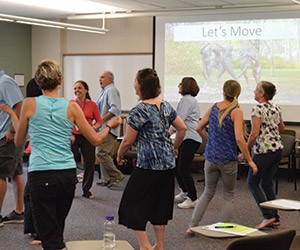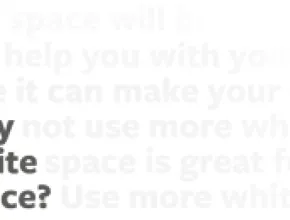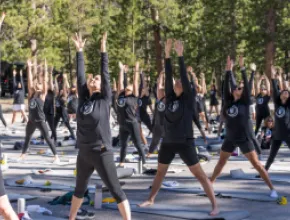Fitbits, yoga mats, boot camps, health spas and fitness apps are just some of the signs reflecting a country obsessed with physical and mental well-being. The wellness trend spills from private to corporate life, combating endless sedentary hours in front of a computer or in a boardroom.
Wellness, which spans alternative medicine, healthy eating, preventative health, corporate wellness programs, fitness and more, was tagged as a $2 trillion global industry, according to SRI International in 2013, and more recently was listed as a $3.4 trillion market and one of the fastest-growing industries on Earth, according to last year’s “Global Spa & Wellness Economy Monitor,” a report published by the Global Wellness Institute.
“Wellness is still trending—growth in the connection of mind, body and spirit,” says Monica Graves, certified master educator at the Chopra Center for Wellbeing, located in Carlsbad, Calif., and co-founded by Dr. Deepak Chopra. “Because mind and body are connected, when you experience tension, fatigue and tightness in the body, you feel it also in the mind. Moving the body relieves tension and creates more space for the mind to internalize”.
According to Graves, research shows that starting the day with movement and exercise is one of the key elements for people to get energized, as well as be alert and focused.
“At a multiday meeting any opportunity the planner has at the beginning of the day to help stimulate the brain and body, to bring oxygen into the body, is optimal for brain function,” Graves says. “In the morning you stimulate cells from a restful state, getting the energy flowing, making you loose and limber so you can be more comfortable sitting at a conference all day.”
To entice attendees to participate, Graves suggests there be an opportunity to gamify the exercise, with participants given a ticket that is entered into a raffle for prizes, such as a spa treatment.
According to Steven Gratkins, exercise physiologist at Canyon Ranch in Tucson, Ariz., “In a meeting sitting for hours, a person’s metabolism is closer to that of the resting state, burning fewer calories.”
He suggests to elevate the metabolism every 20 minutes with simple chair exercises, and every 45 minutes to make sure to get up and move around. Specific chair exercises can be as simple as leg extensions, leg curls, calf raises, shoulder presses, bicep curls, tricep extensions or even sitting at the edge of a seat and rocking back and forth to engage the core muscles.
“In general, I recommend three exercises that every busy travel person could do—a squat, chest press and a row,” Gratkins says. “Those work 87 percent of the muscle groups, preventing loss of muscle mass. If we lose muscle mass, we decrease our resting metabolism, not burning as many calories.”
A chest press can be a pushup, a wall pushup or using a resistance band on a door moving arms, straight forward and back, while a resistance band can also be used for a back-strengthening row motion, facing a door and pulling the arms back.
Gratkins also notes that aerobic exercise, even basic options such as climbing stairs and walking after lunch, is key to lowering blood pressure, decreasing body fat, increasing confidence and lowering cholesterol, which improves stamina.
Mim Senft, wellness director–strategy and management at Optum Health and on the board of the National Wellness Institute, recommends incorporating three minutes of easy stretching at the beginning of each session.
“Science tells us that this type of physical centering helps with retaining new information,” Senft says.
During meeting breaks, Graves recommends groups incorporate rejuvenation stations, 10-minute chair massage breaks and aromatherapy. She also advocates bringing 10-minute wellness breaks into the general session.
“Take a few deep breaths to get grounded and connected. Settle any thoughts with business, create a more open mind for information to be presented,” Graves says.
PageBreak
“Conscious breathing has been shown to activate the parasympathetic nervous system, inducing a relaxation response,” explains Julie Haber, senior spiritual wellness provider at Tucson, Ariz.’s Canyon Ranch. “It is a great stress reliever. It also brings oxygen into the brain, helping us to think, work and make decisions more effectively.”
Another break option is chair yoga, working six directions of the spine.
“The spine is the primary channel of communication between body and mind,” Graves says. “Between the base of the spine and nape of neck, 90 percent plus have tension, blockage and restraint. Like a folded hose, creating a kink, tension in the spine prevents energy flow and communication.”
Nicola Finley, a Tucson-based internal medicine physician, also on the integrative wellness team from Canyon Ranch, concurs that yoga taps into the mind-body connection.
“It is a great strategy to encourage us to slow down and to encourage us to do less multitasking,” she says. “It also allows us to concentrate on our breathing, which can release muscle tension. Yoga has a positive effect on neuroplasticity—it increases white matter connectivity and gray matter volume.”
Yoga also helps balance the endocrine system, according to Haber.
“When we are stressed, we often feel depleted in our adrenals,” she offers. “Yoga helps to restore us when we feel tired.”
Simple movements like forward bends, which open up tight hamstrings and bring down stress levels, mountain pose, which aligns the spine and opens up the shoulders, and simple shoulder rolls are easy to incorporate throughout the day, according to Joel Bennett, president of Organizational Wellness & Learning Systems and a board member for the National Wellness Institute.
Certain yoga poses help awaken and stimulate the circulatory system and unblock stuck energy, according to Chrissy Wellington-Garner, nutritionist at Canyon Ranch in Lenox, Mass. Good options include the sun salutation, bridge pose, camel pose and spine twist.
Getting outdoors during a meeting is key to physical and mental well-being, Graves says. In lieu of going outside, creating a natural environment indoors can be beneficial, using plants, trees and flowers in the meeting space.
Offering nature imagery during breaks also has subtle psychological effects, Graves says. “If there is a lot of activity and information at a meeting, images of mountains and trees can help ground and relax attendees. If there is a meeting with tough decisions or strategy-making, images of water, oceans, lakes and waterfalls can help attendees relax.”
Soothing practices, such as meditation, sound healing and massage are also beneficial.
“Meditation has been shown to reduce blood pressure, lower a person’s heart disease risk and lower inflammatory markers,” Finley says. “In one study, 30 minutes of daily meditation increased the gray matter of the brain.”
Meanwhile, Haber touts the benefits of sound healing.
“If you have trouble sleeping while traveling or at a conference, try an app with natural sounds such as ocean waves, waterfalls, wind chimes or natural sounds in nature,” she advises.
One property taking the lead in wellness is MGM Grand Hotel & Casino in Las Vegas, with its Stay Well Program, designed by Delos, a real estate company that boasts Dr. Deepak Chopra as an advisory board member and created the Well Building Standard. Stay Well rooms offer aromatherapy, Vitamin C-infused showers and have lighting based on circadian rhythms, engineered to emulate the properties of natural light, enhancing productivity, energy and experience.
Based on the positive response to the Stay Well rooms, MGM Grand launched Stay Well Meetings last year, according to Gregg Herning, vice president of sales for MGM Grand.
“Our Stay Well Meetings, the industry’s first-ever wellness meetings experience, is ideal for groups because the features provide health benefits to attendees and lead to increased productivity, creativity and collaboration,” he says.
Stay Well Meetings offers Wellness Moment Programming, which consists of a selection of short mental and physical activities. These can either be led in person or by video, according to Dr. Michael F. Roizen, chief wellness officer and chair of the Wellness Institute of the Cleveland Clinic. Delos, in collaboration with the Cleveland Clinic, selected activities proven to energize, boost creativity, relax and focus meeting attendees, including guided meditation narrated by Chopra.
With all the options available, an education component at meetings regarding wellness is vital, according to Graves: “A deep sense of awareness increases the likelihood of wellness being a sustainable part of their lives rather than a seven-minute experience at a conference.”







